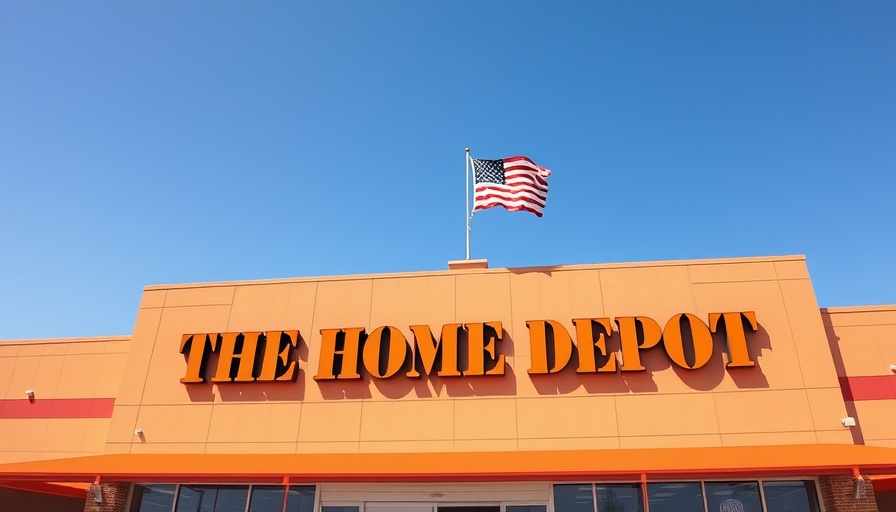
Home Depot's Stand: Stability Amid Price Hikes
In the complicated landscape of U.S.-China trade relations, Home Depot has notably taken a bold stance. As many retailers, like Walmart, brace for increasing prices due to tariffs stemming from the ongoing trade war initiated by the Trump administration, Home Depot has announced it will not join the fray. According to Richard McPhail, the company's CFO, Home Depot plans to maintain its pricing levels, a decision influenced by their size and the long-standing partnerships they have fostered with suppliers. "Because of our scale...we intend to generally maintain our current pricing levels across our portfolio," he said in a recent interview with CNBC.
Understanding Home Depot's Strategy
This decision is not simply a matter of resisting external pressures; it's a strategic move that underscores the company’s solid footing in the market. More than fifty percent of Home Depot’s products are produced domestically, a situation that McPhail attributes to their proactive diversification of imports. Looking ahead, he projects that by 2026, no single country outside the U.S. will account for more than 10% of their product line. This foresight positions Home Depot favorably as they seek to navigate fluctuations in international trade.
The Impact of Homeowners’ Choices
While it’s clear that Home Depot is confident in maintaining its price integrity, the real test lies in consumer behavior. With rising interest and mortgage rates leading to decreased spending in larger projects, consumers are now opting for smaller renovations. CEO Ted Decker iterated this shift, noting, "People are painting again and working in their yards..." These smaller projects have the potential to offset the decline in sales for bigger renovations and may signal a shift in how homeowners are investing in their living spaces amid economic uncertainty.
Leveraging Economic Dynamics to Gain Market Share
Home Depot's approach during this turbulent economic climate could provide them with a significant competitive edge. McPhail sees the current pricing strategy as an opportunity not just for Home Depot, but also for their suppliers. By maintaining stable prices while others are forced to raise theirs, Home Depot can appeal to budget-conscious consumers who might be wary of price surges. This strategy aligns directly with their goal to take market share by emphasizing value.
Looking Ahead: The Path of the Trade War
As of mid-May, the atmosphere surrounding tariffs has begun to shift, with Trump’s administration announcing a reduction from a steep 125% to a more manageable 30% for a limited 90-day period. This timing plays into Home Depot’s sales strategy during peak months, particularly spring—a season historically associated with home improvement projects.
Community Response: Urban and Suburban Insights
Homeowners, particularly in California where housing costs are often the highest, feel the impacts of national policies at a local level. Many California residents are keenly aware of how economic trends translate into their lives, particularly in regards to home maintenance and renovations. Home Depot’s pricing integrity could win them customer loyalty in a market where homeowners are increasingly budget-conscious, especially in cities like San Francisco and Los Angeles where economic barriers dissuade larger investments.
Consensus: Home Depot as a Trusted Retailer
As news of steady pricing spread, consumers are likely to look towards Home Depot not only as a one-stop shop for DIY needs but also as a trustworthy retailer in volatile times. By focusing on maintaining supply chain stability and customer engagement despite external pressure, Home Depot is reinforcing its role in the community.
Conclusion: The Bottom Line for Homeowners
For homeowners in California and beyond, understanding the implications of decisions made by retailers like Home Depot is key to navigating this new economic landscape. With store prices remaining consistent, customers can engage in their desired home projects without worrying about inflated costs due to tariffs. As the situation develops, it’s crucial for consumers to stay informed and adaptable in order to take advantage of these market opportunities.
 Add Row
Add Row  Add
Add 




Write A Comment